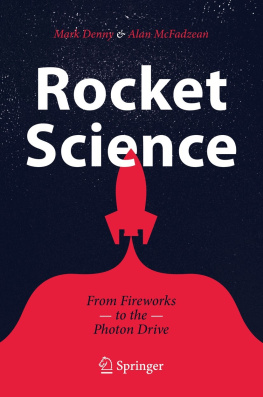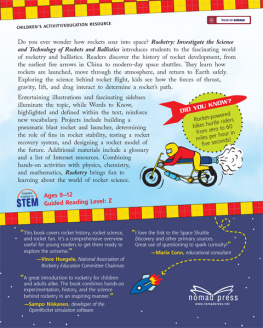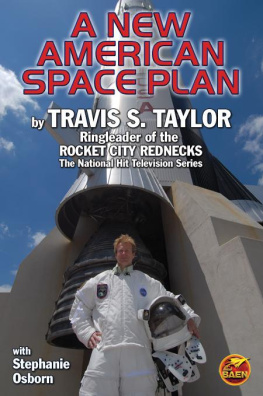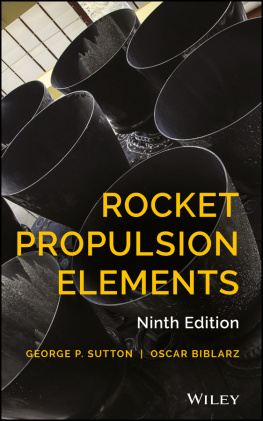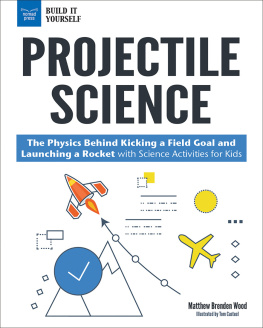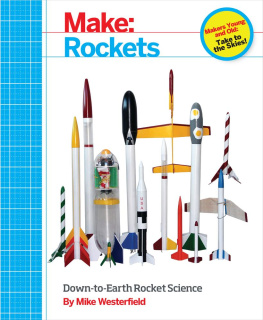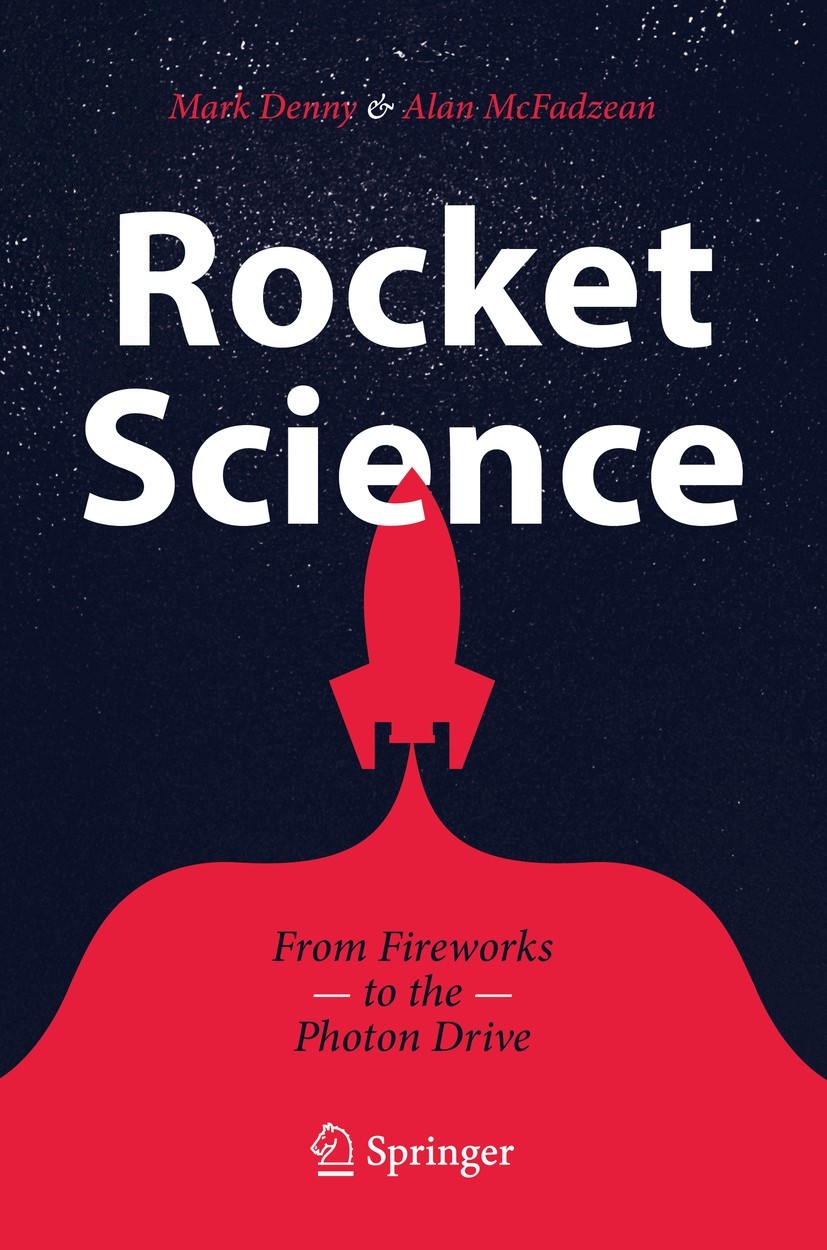Mark Denny
Victoria, BC, Canada
Alan McFadzean
Edinburgh, UK
ISBN 978-3-030-28079-6 e-ISBN 978-3-030-28080-2
https://doi.org/10.1007/978-3-030-28080-2
Springer Nature Switzerland AG 2019
This work is subject to copyright. All rights are reserved by the Publisher, whether the whole or part of the material is concerned, specifically the rights of translation, reprinting, reuse of illustrations, recitation, broadcasting, reproduction on microfilms or in any other physical way, and transmission or information storage and retrieval, electronic adaptation, computer software, or by similar or dissimilar methodology now known or hereafter developed.
The use of general descriptive names, registered names, trademarks, service marks, etc. in this publication does not imply, even in the absence of a specific statement, that such names are exempt from the relevant protective laws and regulations and therefore free for general use.
The publisher, the authors, and the editors are safe to assume that the advice and information in this book are believed to be true and accurate at the date of publication. Neither the publisher nor the authors or the editors give a warranty, express or implied, with respect to the material contained herein or for any errors or omissions that may have been made. The publisher remains neutral with regard to jurisdictional claims in published maps and institutional affiliations.
This Springer imprint is published by the registered company Springer Nature Switzerland AG
The registered company address is: Gewerbestrasse 11, 6330 Cham, Switzerland
PrefaceLift off
Many readers are interested in rockets but not in mathematics, and so your authors have to square a circleto present a technical subject in a manner that is insightful without presenting it using the language that provides the insight. We do this by choosing carefully which aspects of rocketry to analyze mathematically and by relegating all the math to a technical Appendix. Thus, those of you who do not care to read math analysis can stick to the main text, where smooth and continuous prose will elucidate the rocketry (you will have to take our word for it that the analysis is right). Those readers who crave mathand they are not such rare creatures as you might supposewill find that the derivations provided in the technical appendix are complete, though condensed. High school physics will get you through the main text; undergraduate physics and math are needed for the Appendix.
We generally use scientific units and notation. Thus: meters instead of feet, and kilometers instead of miles, though we will provide both occasionally, especially in a historical context. Speed is here measured in meters per second and denoted ms -1 rather than m/s. Here is your first conversion: 1 ms -1 = 2.24 mph. Acceleration is measured in ms -2 : the acceleration due to gravity at the Earths surface is g = 9.8 ms -2 = 32 feet per second per second. In dimensionless units we say this is 1 g (so that an acceleration of 25 ms -2 is 2.55 g ). We use G to represent the force that results from acceleration g , so that an astronaut in a centrifuge subjected to 2 g acceleration will feel a G-force of twodouble his weight.
There are two authors. We wrote different chapters and when we combined them to form an early version of the full manuscript we found that, naturally enough, some of the more important subject matter was repeatedwith stylistic differences. Generally we have expunged one or other account of such repeated material (leaving the clearer version) but occasionally we have retained both, where it seems to aid clarity or emphasize a significant point.
A note on terminology: The first human in space was Yuri Gagarin , a Soviet citizen. The Soviets and their Russian successors have always called their space travelers cosmonauts; everyone elses are known as astronauts. The cosmo comes from cosmos, meaning the whole Universe, and the astro comes from stars. For simplicity we will call them all astronauts and, so far, none of them have been further than the Moon. Still, its early days In the same vein we sometimes use Russian for Soviet because the USSR can be considered as the Russian Empire under new management. Following the collapse of the USSR, we stick with Russian.
More terminology: like all technical subjects, rocketry and space travel are full of jargon, acronyms and abbreviations. Here are a few of the more common ones to get you in the moodwe will define them in the text when first introduced, but in case you later forget what they stand for, you can refer back to this preface.
ABM | Anti-Ballistic Missile |
AI | Artificial Intelligence |
CONOPS | CONcept of OPerationS |
ESA | European Space Agency |
GNC | Guidance, Navigation and Control |
GSO | GeoSynchronous Orbit or GeoStationary Orbit |
GTO | Geostationary Transfer Orbit |
ICBM | Inter-Continental Ballistic Missile |
IRBM | Intermediate Range Ballistic Missile |
ISS | International Space Station |
LEO | Low Earth Orbit |
MIRV | Multiple Independently-Targetable Re-Entry Vehicle |
NASA | National Aeronautics and Space Administration |
NEO | Near-Earth Orbit |
R&D | Research and Development |
RPG | Rocket-Propelled Grenade |
SSTO | Single Stage To Orbit |
At the time of writing we are marking the 50 th anniversary of the first Apollo Moon landing. The rocket that lifted the lunar module with its human payload out of the grip of Earths gravity was the Saturn V the most powerful rocket flown to date. We will see in this book that rockets as we know them peaked with Saturn V future rockets will be different beasts, with more brains (the computing power aboard Saturn V was feeble compared with what you carry around in your smartphone) and less brawn. They will perform a wider range of tasks, for which they will be fine-tunedsome of these future rockets wont even be rockets. A hundred years from now we will lift ourselves into orbit in an entirely different manner that circumvents the need for chemical rocket motors which are only just capable of overcoming Earths gravity, as we will see. Once in orbit, we will send people to Mars or the stars with machines that are quite different again. This book celebrates the old-fashioned beasts like Saturn V , looking back and a little forward (these dinosaurs will be with us for a few more decades), but also casts a curiosity-filled glance at their replacements.

